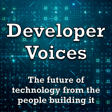
Text User Interfaces in Rust (with Orhun Parmaksız)
For some kinds of application, there is no faster or cheaper way to build a user interface than in the terminal. Sure, it’s not going to suit every kind of user out there, but for those of us that are happy on the command line, rich Text User Interfaces (or TUIs) open all the exploration and discoverability benefits of a GUI are a fraction of the development time.
This week we’re looking at a Rust TUI library with the excellent name ‘ratatui’. We’re joined by Orhun Parmaksız, one of the lead developers and a huge TUI enthusiast on a quest to see how far Text UIs can be pushed.
–
Ratatui: https://ratatui.rs/
Ratatouille Tutorials: https://ratatui.rs/tutorials/
Tui Realm: https://github.com/veeso/tui-realm
Awesome Ratatui: https://github.com/ratatui/awesome-ratatui
RTL SDR: https://www.rtl-sdr.com/about-rtl-sdr/
Rust Snake AI: https://github.com/bones-ai/rust-snake-ai-ratatui
SystemCtl-Tui: https://github.com/rgwood/systemctl-tui
GitU: https://github.com/altsem/gitu
…and GitUi: https://github.com/extrawurst/gitui
GitCliff Changelog Tool: https://git-cliff.org/
ATAC (Postman in the Terminal): https://github.com/Julien-cpsn/ATAC
BubbleTea (TUIs in Golang): https://github.com/charmbracelet/bubbletea
Imgcat (images in the terminal): https://github.com/danielgatis/imgcat
TachyonFX: https://github.com/junkdog/tachyonfx
ASCIITheatre: https://ascii.theater/
Rio Terminal: https://raphamorim.io/rio/
–
Support Developer Voices on Patreon: https://patreon.com/DeveloperVoices
Support Developer Voices on YouTube: https://www.youtube.com/@developervoices/join
Kris on Mastodon: http://mastodon.social/@krisajenkins
Kris on LinkedIn: https://www.linkedin.com/in/krisjenkins/
Kris on Twitter: https://twitter.com/krisajenkins
